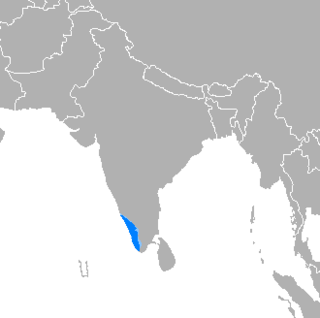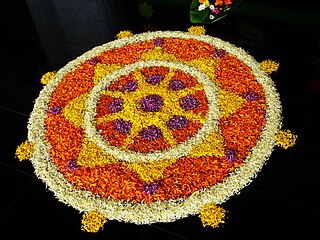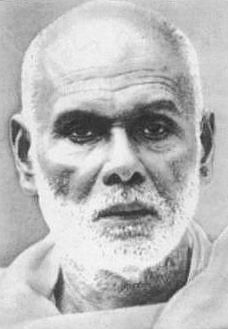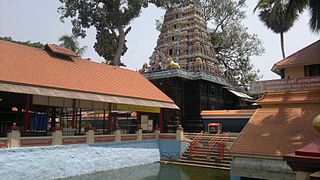
Malayalam is a Dravidian language spoken in the Indian state of Kerala and the union territories of Lakshadweep and Puducherry by the Malayali people. It is one of 22 scheduled languages of India. Malayalam was designated a "Classical Language of India" in 2013. Malayalam has official language status in Kerala, Lakshadweep and Puducherry (Mahé), and is also the primary spoken language of Lakshadweep and is spoken by 35 million people in India. Malayalam is also spoken by linguistic minorities in the neighbouring states; with a significant number of speakers in the Kodagu and Dakshina Kannada districts of Karnataka, and Kanyakumari, Coimbatore and Nilgiris district of Tamil Nadu. It is also spoken by the Malayali Diaspora worldwide, especially in the Persian Gulf countries, due to the large populations of Malayali expatriates there. They are a significant population in each city in India including Mumbai, Bengaluru, Delhi, Kolkata, Pune etc. Malayalam is closely related to the Tamil language.

Kottayam is one of 14 districts in the Indian state of Kerala. Kottayam district comprises six municipal towns: Kottayam, Changanassery, Pala, Erattupetta, Ettumanoor, and Vaikom. It is the only district in Kerala that does not border the Arabian Sea or any other Indian state.

Onam is an annual harvest and cultural festival related to Hinduism that is celebrated mostly by the people of Kerala. A major annual event for Keralites, it is the official festival of the state and includes a spectrum of cultural events.

Vishu is a Hindu festival celebrating the Malayali New Year in Kerala, Tulu Nadu, and Mahe of India. Vishu falls on the first day of the month of Medam in the Malayalam Calendar. It is the traditional new year, while the Kollam era calendar new year falls on the 1st Chingham.

The history of southern India covers a span of over four thousand years during which the region saw the rise and fall of a number of dynasties and empires.

Kollam, also known by its former name Quilon, is an ancient seaport and city on the Malabar Coast of India bordering the Laccadive Sea, which is a part of the Arabian Sea. It is 71 km (44 mi) north of the state capital Thiruvananthapuram. The city is on the banks of Ashtamudi Lake and the Kallada river. Kollam is the fourth largest city in Kerala and is known for cashew processing and coir manufacturing. It is the southern gateway to the Backwaters of Kerala and is a prominent tourist destination. Kollam is one of the most historic cities with continuous settlements in India. Geographically, Quilon formation seen around coastal cliffs of Ashtamudi Lake, represent sediments laid down in the Kerala basin that existed during Mio-Pliocene times.
The Malayali people are a Dravidian ethnolinguistic group originating from the present-day state of Kerala in India, occupying its southwestern Malabar coast. They form the majority of the population in Kerala and Lakshadweep. They are predominantly native speakers of the Malayalam language, one of the six classical languages of India. The state of Kerala was created in 1956 through the States Reorganisation Act. Prior to that, since the 1800s existed the Kingdom of Cochin, the Kingdom of Travancore, Malabar District, and South Canara of the British India. The Malabar District was annexed by the British through the Third Mysore War (1790–92) from Tipu Sultan. Before that, the Malabar District was under various kingdoms including the Zamorins of Calicut, Kingdom of Tanur, Arakkal kingdom, Kolathunadu, Valluvanad, and Palakkad Rajas.
Venad was a medieval kingdom lying between the Western Ghat mountains and the Arabian Sea on the south-western tip of India with its headquarters at the port city of Kollam/Quilon. It was one of the major principalities of Kerala, along with kingdoms of Kannur (Kolathunadu), Kozhikode (Nediyiruppu), and Kochi (Perumpadappu) in medieval and early modern period.

Kolattunādu (Kola Swarupam, as Kingdom of Cannanore in foreign accounts, Chirakkal (Chericul) in later times) was one of the four most powerful kingdoms on the Malabar Coast during the arrival of the Portuguese Armadas in India, along with Zamorin, the Kingdom of Cochin and Quilon. Kolattunādu had its capital at Ezhimala and was ruled by the Kolattiri royal family and roughly comprised the North Malabar region of Kerala state in India. Traditionally, Kolattunādu is described as the land lying between the Chandragiri river in the north and the Korappuzha river in the south. The Kolathunadu (Kannur) Kingdom at the peak of its power, reportedly extended from the Netravati River (Mangalore) in the north to Korapuzha (Kozhikode) in the south with the Arabian Sea on the west and Kodagu hills on the eastern boundary, also including the isolated islands of Lakshadweep in the Arabian Sea.

The culture of Kerala has developed over the past millennia, influences from other parts of India and abroad. It is defined by its antiquity and the organic continuity sustained by the Malayali people. Modern Kerala society took shape owing to migrations from different parts of India and abroad throughout Classical Antiquity.

Mushika dynasty, also spelled Mushaka, was a minor dynastic power that held sway over the region in and around Mount Ezhi (Ezhimala) in present-day North Malabar, Kerala, India. The country of the Mushikas, ruled by an ancient lineage of the Hehaya clan of the same name, appears in early historic (pre-Pallava) south India and it is believed that Mushika dynasty has their descents from Heheya Kingdom. Early Tamil poems contain several references to the exploits of Nannan of Ezhimalai. Nannan was known as a great enemy of the pre-Pallava Chera chieftains. The clan also had matrimonial alliances with the Chera, Pandya and Chola chieftains. The Kolathunadu (Kannur) Kingdom, which was the descendant of Mushika dynasty, at the peak of its power, reportedly extended from Netravati River (Mangalore) in the north to Korapuzha (Kozhikode) in the south with Arabian Sea on the west and Kodagu hills on the eastern boundary, also including the isolated islands of Lakshadweep in the Arabian Sea.
The Kerala New Year used to be on the day of the vernal equinox, i.e., the day when the sun is considered to move from the southern to the northern hemisphere. However, the first Malayalam month is Chingam ചിങ്ങം according to the Malayalam Calendar.

Thrikkakara Vamanamoorthy Temple is one of the major Hindu temples in India dedicated to Vamana, a form of the god Vishnu. It is situated in Thrikkakara, Kochi in the state of Kerala, India. The temple is around two millennia old and is also listed as one of the 108 Divya Desams.

Sri Narayana Jayanthi is a state festival of Kerala. It is celebrated on Chathayam day during the Onam season in Chingam month of Malayalam calendar. It marks the birthday of Narayana Guru, a saint and a social reformer of India who fought against the caste system of Hindu religion.

North Malabar refers to the geographic area of southwest India covering the state of Kerala's present day Kasaragod, Kannur, and Wayanad districts, and the taluks of Vatakara and Koyilandy in the Kozhikode District of Kerala and the entire Mahé Sub-Division of the Union Territory of Puducherry. Traditionally North Malabar has been defined as the northern portion of the erstwhile Malabar District which lies between Chandragiri River and Korapuzha River. The region between Netravathi River and Chandragiri River, which included the portions between Mangalore and Kasaragod, are also often included in the term North Malabar, as the Kumbla dynasty in the southernmost region of Tulu Nadu, had a mixed lineage of Malayali Nairs and Tuluva Brahmins.

The following outline is provided as an overview of and topical guide to Kerala:

The Edava Palakkavu Bhagavathi temple is one of the ancient temples in south India. It is situated at Edava in Thiruvananthapuram District, India. The temple is situated 5.7km North of Varkala City.Bhadrakali Devi is the presiding deity of this temple.

Karikkakom Sree Chamundi Devi Temple or Karikkakom Devi Temple is a temple to three Hindu goddess Chamundi located in Thiruvananthapuram, India at Karikkakom. It is more than 600 years old and enshrines a Panchaloha idol of the goddess Karikkakathamma – an incarnation of Chamundi. Chamundi Devi is worshiped there in three different forms: Maha Chamundi, Raktha Chamundi, and Bala Chamundi.

Quilon or Coulão, officially Kollam, is one of the ancient civilizations in India. It is one of the oldest port cities in the Malabar Coast and was the capital city of historic Venad Kingdom and Travancore Kingdom. Quilon was once an important trading port in India. It was also known as Desinganadu. It is now known as the "Cashew Capital of the World".

Malaysian Malayalees, also known as Malayalee Malaysians, are people of Malayali descent who were born in or immigrated to Malaysia from the Malayalam speaking regions of Kerala. They are the second largest Indian ethnic group, making up approximately 15% of the Malaysian Indian population. The bulk of Malaysian Malayali migration began during the British Raj, when the British facilitated the migration of Indian workers to work in plantations, but unlike the majority Tamils, the vast majority of the Malayalis were recruited as supervisors in the oil palm estates that followed the kangani system, and some were into trading and small businesses with a significant proportion of them running groceries or restaurants. Over 90% of the Malayalee population in Malaysia are Malaysian citizens.
















